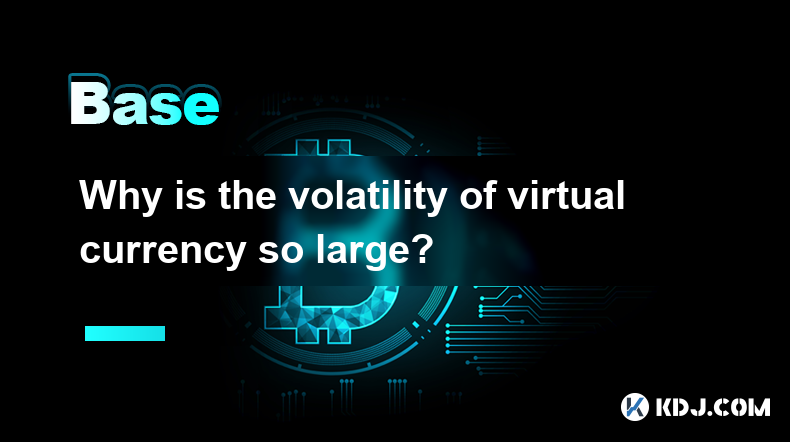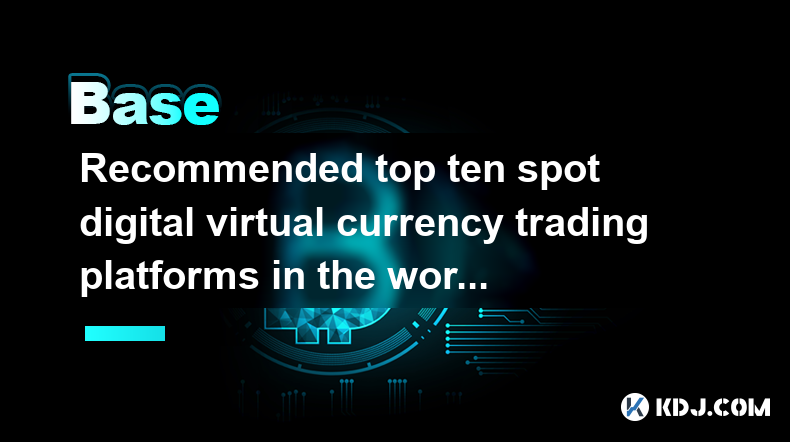-
 Bitcoin
Bitcoin $87,160.3686
2.59% -
 Ethereum
Ethereum $1,577.5291
-0.58% -
 Tether USDt
Tether USDt $1.0000
0.00% -
 XRP
XRP $2.0804
0.22% -
 BNB
BNB $596.3334
0.99% -
 Solana
Solana $136.5658
-0.15% -
 USDC
USDC $1.0000
0.00% -
 Dogecoin
Dogecoin $0.1584
1.77% -
 TRON
TRON $0.2458
-0.32% -
 Cardano
Cardano $0.6208
0.05% -
 Chainlink
Chainlink $13.1006
-1.96% -
 UNUS SED LEO
UNUS SED LEO $9.1412
-1.97% -
 Avalanche
Avalanche $19.9880
2.50% -
 Stellar
Stellar $0.2528
3.56% -
 Shiba Inu
Shiba Inu $0.0...01238
-0.19% -
 Toncoin
Toncoin $2.8930
-3.79% -
 Sui
Sui $2.2031
4.44% -
 Hedera
Hedera $0.1692
1.25% -
 Bitcoin Cash
Bitcoin Cash $343.2002
2.28% -
 Polkadot
Polkadot $3.8296
-1.99% -
 Hyperliquid
Hyperliquid $17.9378
1.39% -
 Litecoin
Litecoin $78.0777
0.75% -
 Dai
Dai $0.9999
0.00% -
 Bitget Token
Bitget Token $4.4322
0.90% -
 Ethena USDe
Ethena USDe $0.9993
0.00% -
 Pi
Pi $0.6347
-0.88% -
 Monero
Monero $214.7110
-0.08% -
 Uniswap
Uniswap $5.2643
-0.22% -
 Pepe
Pepe $0.0...07787
2.99% -
 Aptos
Aptos $4.9970
-0.84%
Why is the volatility of virtual currency so large?
Cryptocurrency volatility stems from speculation, limited regulation, technological issues, low liquidity, and external factors like macroeconomic events and social media trends, creating unpredictable price swings.
Mar 25, 2025 at 01:22 am

Key Points:
- Speculative Nature: Cryptocurrencies are largely driven by speculation and market sentiment, leading to rapid price swings.
- Limited Regulation: The lack of robust regulatory frameworks contributes to increased price volatility.
- Technological Factors: Network upgrades, security breaches, and scaling issues can significantly impact prices.
- Market Liquidity: Relatively low trading volumes in some cryptocurrencies can amplify price fluctuations.
- External Factors: Macroeconomic events, regulatory announcements, and even social media trends can influence prices.
Why is the Volatility of Virtual Currency So Large?
The inherent volatility of virtual currencies is a complex issue stemming from a confluence of factors. Understanding these factors is crucial for anyone considering investing in this asset class. Let's delve into the key drivers behind the wild price swings.
One primary reason is the speculative nature of the cryptocurrency market. Unlike established assets like stocks or bonds, cryptocurrencies lack the same level of fundamental valuation metrics. Their value is largely determined by supply and demand, heavily influenced by investor sentiment and speculation. A surge in positive news or a sudden influx of buyers can quickly inflate prices, while negative news or a sell-off can trigger dramatic drops.
The relatively nascent and lightly regulated nature of the cryptocurrency market is another significant contributor to volatility. Unlike traditional financial markets, which are subject to stringent regulations and oversight, the cryptocurrency space has historically enjoyed a relatively free-wheeling environment. This lack of regulatory framework can lead to increased uncertainty and susceptibility to manipulation, contributing to price swings.
Technological factors play a crucial role in shaping cryptocurrency price movements. Network upgrades, often involving significant changes to the underlying blockchain technology, can trigger periods of uncertainty. Successful upgrades can boost investor confidence, leading to price increases, while failed upgrades or security breaches can cause sharp declines. Scaling issues, which affect the ability of a cryptocurrency network to handle a large number of transactions, also influence prices. Increased transaction fees or network congestion can negatively impact investor sentiment.
Market liquidity, or the ease with which an asset can be bought or sold, is another important factor. Many cryptocurrencies have relatively low trading volumes compared to traditional financial assets. This limited liquidity means that even a small order can significantly impact the price, resulting in amplified volatility. In contrast, more liquid markets tend to absorb price shocks more effectively.
External factors beyond the cryptocurrency ecosystem itself also contribute significantly to volatility. Macroeconomic events, such as changes in interest rates or global economic uncertainty, can impact investor risk appetite and influence cryptocurrency prices. Regulatory announcements from governments around the world can also trigger significant price swings, as can social media trends and influencer opinions, which can rapidly shift market sentiment.
The relatively small size of the cryptocurrency market compared to traditional financial markets also plays a role. This smaller market capitalization means that even relatively small amounts of trading activity can have a disproportionately large impact on prices. This contrasts with larger, more established markets where the impact of individual trades is diluted.
The decentralized nature of cryptocurrencies, while often touted as a benefit, also contributes to volatility. The lack of a central authority to control or influence the market means that prices are more susceptible to speculative forces and market manipulation. This lack of control can lead to significant price swings that are difficult to predict or control.
Furthermore, the anonymity associated with certain cryptocurrencies can attract illicit activities, further destabilizing the market. Money laundering and other illegal activities can create volatility as regulatory crackdowns or uncovering of illicit schemes can lead to sudden price drops.
The psychological aspect of investing in cryptocurrencies also plays a role. Fear, uncertainty, and doubt (FUD) can trigger widespread sell-offs, while hype and excitement can lead to rapid price increases. These emotional responses to market events can amplify volatility and make it difficult to predict price movements based purely on fundamental analysis.
The influence of large institutional investors is also becoming increasingly significant. The entry or exit of large players can create significant price swings, particularly in less liquid markets. Their trading strategies and decisions can have a disproportionate impact on overall market sentiment and price movements.
Finally, the inherent complexity of blockchain technology and cryptocurrency itself can contribute to volatility. Understanding the intricacies of different cryptocurrencies, their underlying technology, and the market dynamics can be challenging even for experienced investors. This lack of widespread understanding can lead to increased uncertainty and volatility.
Frequently Asked Questions:
Q: Are cryptocurrencies always this volatile?
A: No, the level of volatility varies depending on the specific cryptocurrency, market conditions, and external factors. Some cryptocurrencies are more stable than others, but overall, the market is known for its significant price swings.
Q: Can I predict the volatility of virtual currencies?
A: Accurately predicting the volatility of cryptocurrencies is extremely difficult, if not impossible. While technical and fundamental analysis can provide some insights, the market is heavily influenced by speculative factors and unpredictable events.
Q: Is the volatility of virtual currency a risk or an opportunity?
A: The high volatility presents both risks and opportunities. The potential for significant gains is a major draw for investors, but the risk of substantial losses is equally significant. Investors must carefully assess their risk tolerance before investing.
Q: How can I mitigate the risks associated with the volatility of virtual currencies?
A: Diversification across different cryptocurrencies and asset classes, careful risk management, and a long-term investment strategy can help mitigate the risks associated with volatility. Avoid investing more than you can afford to lose.
Q: What role does regulation play in reducing volatility?
A: Increased regulation could potentially reduce volatility by increasing transparency, reducing market manipulation, and providing a more stable regulatory environment. However, the impact of regulation on cryptocurrency volatility is still debated.
Disclaimer:info@kdj.com
The information provided is not trading advice. kdj.com does not assume any responsibility for any investments made based on the information provided in this article. Cryptocurrencies are highly volatile and it is highly recommended that you invest with caution after thorough research!
If you believe that the content used on this website infringes your copyright, please contact us immediately (info@kdj.com) and we will delete it promptly.
- Lightchain AI: The Future of Cryptocurrency
- 2025-04-22 05:30:13
- Coinbase Expands XRP Futures Contracts Trading
- 2025-04-22 05:30:13
- Difficulty Spike and Hashrate Drop Lengthen Block Times
- 2025-04-22 05:25:13
- Despite the Harshest Profit Squeeze in Half a Decade, Bitcoin Mining on U.S. Soil is Consolidating and Gathering Momentum
- 2025-04-22 05:25:13
- Bitcoin (BTC) markets ticked higher
- 2025-04-22 05:20:13
- Shiba Inu (SHIB) and Lightchain AI (LCAI) Are Rapidly Gaining Ground, Positioning Themselves as Serious Competitors to Dogecoin.
- 2025-04-22 05:20:13
Related knowledge

What are the formal digital currency trading apps? What are the BTC exchange apps?
Apr 22,2025 at 03:28am
Regular BTC trading app 1. Binance Binance is a world-renowned digital currency trading platform, providing powerful APPs and excellent user experience. Its main features include: Rich trading pairs : Binance supports over 500 cryptocurrencies and thousands of trading pairs, and users can easily find the currency they want to trade. High security : Bina...

Recommended top ten spot digital virtual currency trading platforms in the world in 2025
Apr 21,2025 at 05:15pm
Recommended top ten spot digital virtual currency trading platforms in the world in 2025 1. Binance As the world's premier cryptocurrency trading platform, Binance is known for its extensive trading pairs and efficient trading services. Its features include: High Liquidity : Binance has huge trading volumes, ensuring users can trade at the best pric...

Ranking of top ten virtual currency trading apps in the currency circle (the latest authoritative list in 2025)
Apr 21,2025 at 10:28pm
The top ten virtual currency trading apps in the 2025 cryptocurrency circle are listed as follows: 1. Binance Binance is one of the world's leading cryptocurrency trading platforms, known for its efficient trading system and extensive currency support. Binance's user interface is designed with simplicity and is suitable for beginners and profess...

Introduction to the top ten digital currency trading app platforms in 2025
Apr 22,2025 at 03:49am
Introduction to the top ten digital currency trading app platforms in 2025 1. Binance Binance is one of the world's leading digital currency trading platforms, ranking first with its huge trading volume and extensive user base. Binance provides trading pairs of more than 500 cryptocurrencies, supporting a variety of trading methods such as spot trad...

The latest ranking of the top ten digital virtual currency trading platforms in 2025
Apr 22,2025 at 02:14am
The latest ranking of the top ten digital virtual currency trading platforms in 2025 1. Binance As the world's largest cryptocurrency trading platform, Binance has always maintained its leading position. The platform offers trading pairs in over 500 cryptocurrencies and supports multiple languages and payment methods. Its user-friendly interface i...

Which virtual currency app is better? Top ten cryptocurrency app trading platforms
Apr 22,2025 at 02:35am
Top 10 cryptocurrency trading application platforms recommended 1. Binance Binance is one of the world's leading cryptocurrency trading platforms, and is popular for its extensive currency support and efficient trading systems. Binance provides services including spot trading, futures trading, leveraged trading, etc., which meet the needs of differe...

What are the formal digital currency trading apps? What are the BTC exchange apps?
Apr 22,2025 at 03:28am
Regular BTC trading app 1. Binance Binance is a world-renowned digital currency trading platform, providing powerful APPs and excellent user experience. Its main features include: Rich trading pairs : Binance supports over 500 cryptocurrencies and thousands of trading pairs, and users can easily find the currency they want to trade. High security : Bina...

Recommended top ten spot digital virtual currency trading platforms in the world in 2025
Apr 21,2025 at 05:15pm
Recommended top ten spot digital virtual currency trading platforms in the world in 2025 1. Binance As the world's premier cryptocurrency trading platform, Binance is known for its extensive trading pairs and efficient trading services. Its features include: High Liquidity : Binance has huge trading volumes, ensuring users can trade at the best pric...

Ranking of top ten virtual currency trading apps in the currency circle (the latest authoritative list in 2025)
Apr 21,2025 at 10:28pm
The top ten virtual currency trading apps in the 2025 cryptocurrency circle are listed as follows: 1. Binance Binance is one of the world's leading cryptocurrency trading platforms, known for its efficient trading system and extensive currency support. Binance's user interface is designed with simplicity and is suitable for beginners and profess...

Introduction to the top ten digital currency trading app platforms in 2025
Apr 22,2025 at 03:49am
Introduction to the top ten digital currency trading app platforms in 2025 1. Binance Binance is one of the world's leading digital currency trading platforms, ranking first with its huge trading volume and extensive user base. Binance provides trading pairs of more than 500 cryptocurrencies, supporting a variety of trading methods such as spot trad...

The latest ranking of the top ten digital virtual currency trading platforms in 2025
Apr 22,2025 at 02:14am
The latest ranking of the top ten digital virtual currency trading platforms in 2025 1. Binance As the world's largest cryptocurrency trading platform, Binance has always maintained its leading position. The platform offers trading pairs in over 500 cryptocurrencies and supports multiple languages and payment methods. Its user-friendly interface i...

Which virtual currency app is better? Top ten cryptocurrency app trading platforms
Apr 22,2025 at 02:35am
Top 10 cryptocurrency trading application platforms recommended 1. Binance Binance is one of the world's leading cryptocurrency trading platforms, and is popular for its extensive currency support and efficient trading systems. Binance provides services including spot trading, futures trading, leveraged trading, etc., which meet the needs of differe...
See all articles






















































































